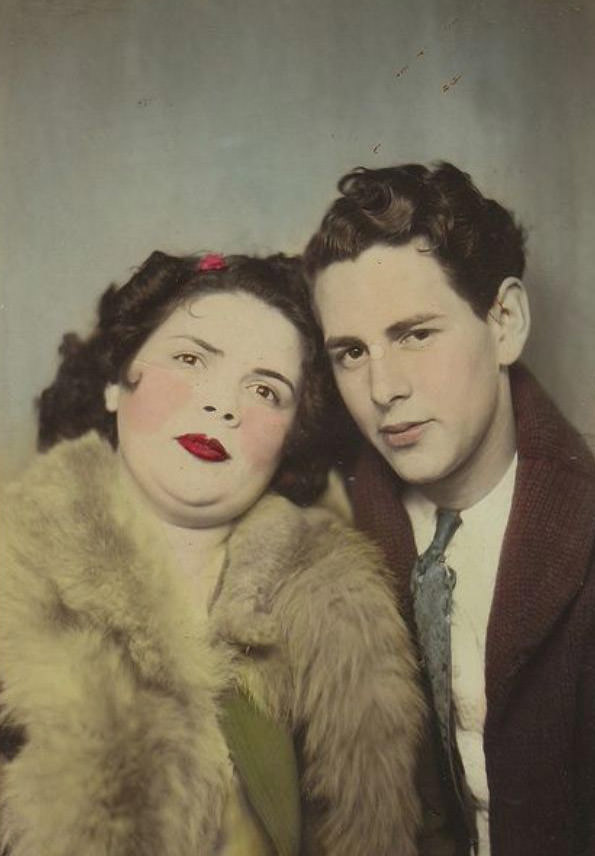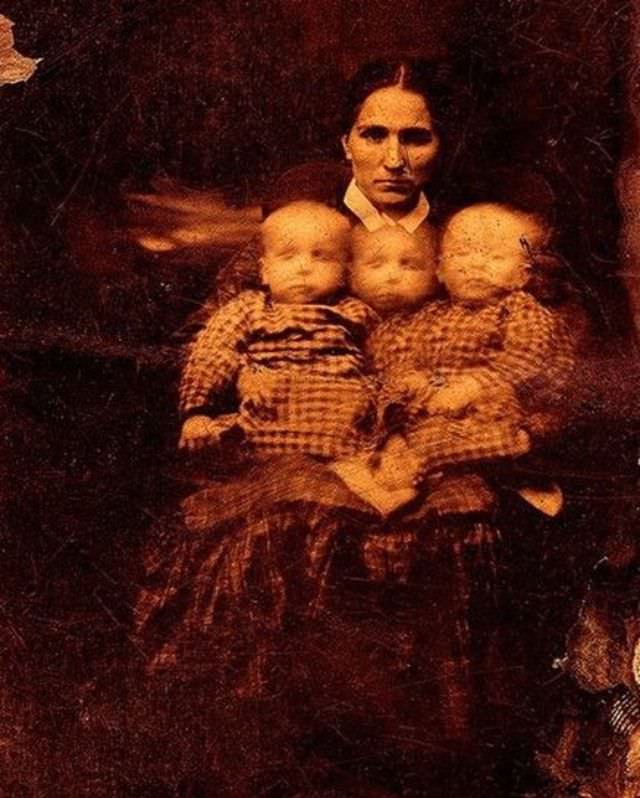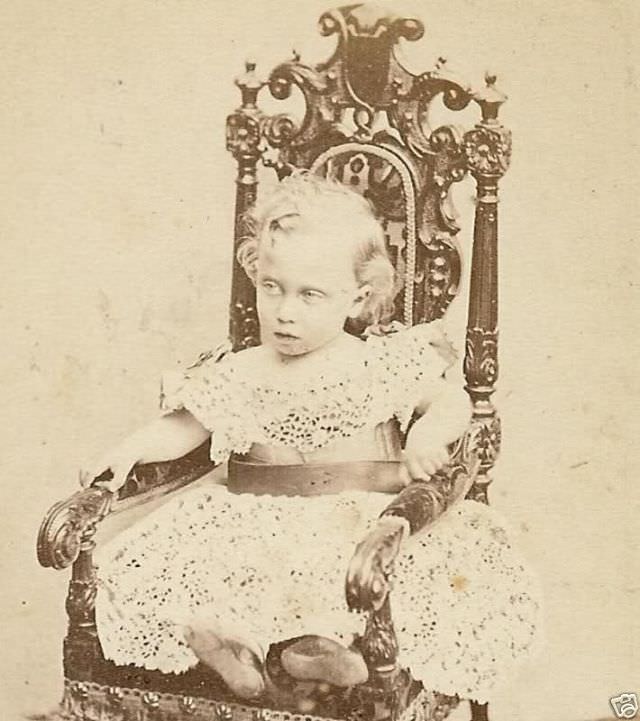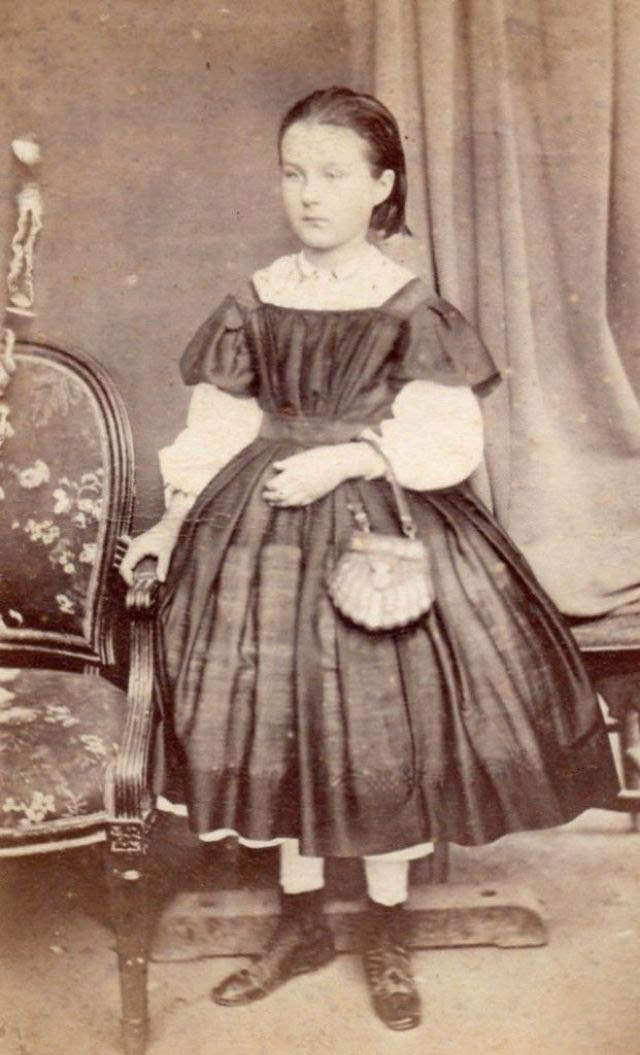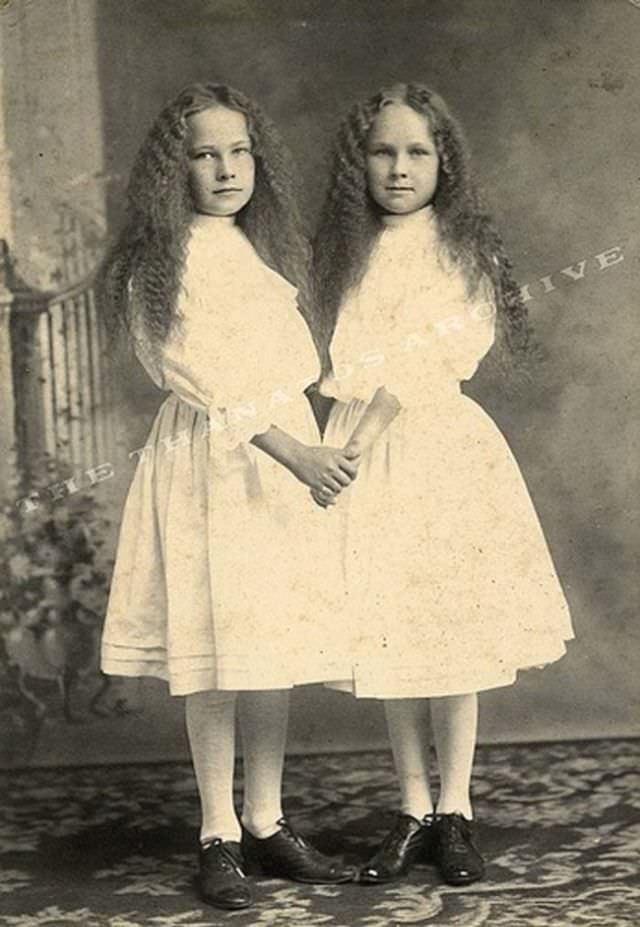Hey there, history buffs and photography enthusiasts! Today, we’re diving into a fascinating and somewhat morbid topic: Victorian postmortem photography. We’ve all seen those eerie, haunting images of deceased loved ones captured during a time when death was all too present in everyday life. But did you know a myth surrounding these photographs needs to be debunked? So, grab your favorite detective hat, and let’s separate fact from fiction in Victorian postmortem photography. We’ll also take a closer look at some photos of deceased people and how they are incorrectly interpreted as corpses., giving you a clearer understanding of the truth behind Victorian postmortem photography.
First, let’s address the elephant in the room: Victorian postmortem photos did exist. Death was an omnipresent part of life in the Victorian era, and it was common for families to want a final photograph of their departed loved ones as a memento. However, contrary to popular belief, these photographs were never taken with the deceased in a standing position using a posing stand. Taking a life-like standing postmortem photo was virtually impossible, especially using a posing perspective.
Why was it so impossible? Well, there are a few reasons:
- Posing stands were not designed to support a person’s weight. Even a child’s corpse would be too heavy for these stands, which were created to help people keep still during long shutter exposures that could last up to a minute.
- A corpse in rigor mortis couldn’t be posed. Rigor mortis, the stiffening of the body after death, would make it impossible to position a body in a standing position without looking unnatural.
- A corpse not in rigor mortis would be limp and heavy. Without the stiffness of rigor mortis, a body would be unable to support its weight on its feet, even with the help of a stand. The deceased would also be unable to hold up their head and arms, resulting in an unnatural appearance.
So, how were Victorian postmortem photos taken? The answer is simple: they were always captured in a reclining position. The deceased would either be leaning back seated or lying flat. In some cases, you may find photographs of children sitting in a parent’s lap, but they were never photographed standing or sitting up straight on their own.
The myth of the stand-alone corpse has persisted, in part, due to misidentified photographs. Some people may have mistaken images of living subjects, who needed the support of a posing stand to remain still during long exposure times, for postmortem photographs. This confusion has likely contributed to the myth’s endurance.
Now that we’ve debunked the myth of the stand-alone corpse, we can appreciate Victorian postmortem photography for what it was: a touching and poignant way for families to remember their lost loved ones during a time when death was a constant reality. So the next time you come across one of these haunting images, you’ll know the truth behind the photographic techniques of the time.
#1 Well Dressed Boy
#2 Girl Holding Money

This little girl look anxious about having her photo taken but she is not deceased. She is even holding some money in her left hand. It was probably given to her to calm and distract her during the photo session. You can also see a large motion blur on her left foot. She was definitely alive.
#3 Mysterious Woman
#4 Not Victorian, But Quite A Story
#5 The Bride
#6 Artistic Photo
#7 Baby With Mother
#8 Flash Misfire
#9 Squirming Children
#10 Innsmouth Woman
#11 Day Dreaming
#12 War Pageant Photo
#13 Framed Twins
#14 Girl With Look Alike Doll
#15 A Christmas Dream
#16 A Portrait of a Young Woman
#17 Young Man Gripping Table
#18 Sleeping Baby

The info with the original photo says: "Here we present an historic image of Adams family portrait, with man, woman, and baby girl. It was taken in 1846. The image shows Adams, Henry Joseph. Adams, Abigail Ridley Gibson. Kingsbury, Anna Gibson Adams, 1845-1884." Nothing was mentioned about death, nobody looks like they are in mourning and the child looks healthy. Everyone with closed eyes is not dead!
#19 Seated Woman With Umbrella
#20 Mother and Child
#21 Boy With Flowers
#22 Damaged Photo of Baby
#23 Three Young Men
#24 Handicapped Girl
#25 Eerie Eyes
#26 Boy With Cane
#27 Prince Albert Victor of Wales
#28 Four Sisters
#29 Spirit Photo
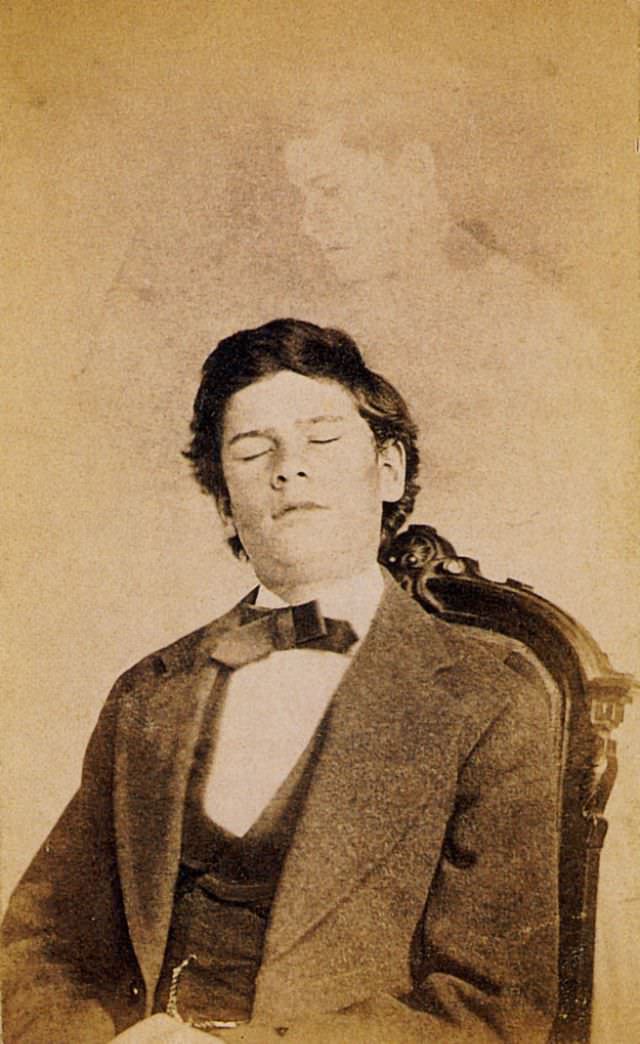
Do you see the spirit image in the upper right hand corner of this photo? This is a staged photo of a live man who is supposedly in a trance to bring the spirit to him. Spirit photos were popularized as soon as photographers were able to fake them by printing double negatives.




